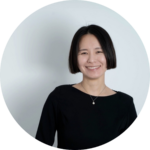Many of us in the product community face the challenge of limited product feature usage. A Pendo survey revealed that most product users do not use 80% of product features. Microsoft has also observed that an average PowerPoint user utilizes less than 10% of the available PowerPoint features. My own experience also aligns with the Pendo survey findings. However, increasing feature usage is crucial in order to retain customers and enable growth through upsell.
In this article, I share my observations on the motivations behind introducing new features, why end users under utilize features, its potential impact and describe the approaches that I have used to increase feature usage.
Motivations for introducing new features
As product managers we introduce new features and capabilities into our products for several reasons:
- Ensuring that the product is aligned with market and technology trends
- Ensuring that the product has unique and differentiating features
- Addressing specific customer requests and challenges
- Ensuring that the product is comparable to competitor product
In the B2B world, procurement teams often favour feature rich products. Most RFPs require compliance for a comprehensive range of features, necessitating vendors to support these in their products in order to win the business. In addition, in sectors such as mobile telecoms, the technology standards are continuously evolving and this also requires vendors to support new technologies in line with the evolving standards.
Observations on feature utilization
Despite the availability of comprehensive features, the end users often utilise only a small subset. In my experience, this is attributed to several factors:
- Focus on immediate needs: End users utilize features that help fulfil their current tasks
- Lack of time: Users often lack the time to explore additional features, even if these may provide extra value.
- Awareness gap: Sometimes users are not aware of or have forgotten what is available in the product.
Other factors which also limit feature usage include the inertia of learning something new or doing something differently. With complex features, the ease of set up or the time taken to execute specific tasks may also deter usage.
Impact of low feature usage
Low feature usage can lead to:
- Reduced upsell opportunities: Limited usage makes it harder to sell additional capabilities
- Increased churn risk: If users only use basic or very limited features, they may switch to competitors offering the same.
Approaches to drive feature usage
In order to increase feature usage, end users need to be made aware of the value of additional features and need to be able to utilise them with very little friction.
Below are the approaches I have used in recent years to move the feature usage needle:
- Regularly user engagement - learn, inform and educate
Regular customer engagement helps understand customer needs and provides an opportunity to demonstrate features that can add value in the customer’s context.
In my interactions with customers, I have come across situations where the customer is trying to solve an issue and is unaware of the product’s capability to address the issue, such as simpler ways of setting up the product for their use case or the ability to do specific types of modelling.
In addition to informing and educating, these regular interactions can also lead to new use cases for existing capabilities.
- Frequent feature updates
Presenting features in a workshop setting helps users understand the breadth of capability. However, it is likely that they will not remember everything that was presented. Hence, it is important to provide frequent updates. Getting face time with customers on a regular basis may be difficult and can become overwhelming. It is important to leverage different formats to promote the features.
One of the approaches that I have used is to share brief explainer videos (2-3 mins) on a monthly basis over email and the social media platforms. Each video focuses on a very specific aspect of the product. It could be a set of usability features which results in the reduction in the number of clicks or could be a technology feature which allows them to model a new technology. The aim is to demonstrate and informs the user of the additional value that the product can create.
The availability of text-to-speech platforms such as Synthesia make it very easy to create explainer videos.
- Collateral access with reduced friction
Once the user is persuaded that a particular feature or capability can add value, it is important to ensure that there is very little friction in setting up and running that capability. When it comes to complex features, users often refrain from using them as they are complex to set up. Even though the product may have a comprehensive set of supporting material such as user guides, technical guides, how-to videos, it is often difficult to navigate through the high volume of information.
More recently, I have been exploring the use of Generative AI to change the way in which users interact with different product collateral. Instead of searching through individual documents, user can ask specific questions and get a coherent response, making the process much smoother.
- Internal culture of continuous learning
In addition to referring to collateral, at times users will need further support from the customer facing teams. It is important to establish an internal culture of continuous learning in order to ensure that the customer facing teams can promote and defend the product’s capabilities.
Some of the approaches that I have implemented include:
- A regular monthly internal webinar on a specific topic or feature
- An internal LMS (Learning Management System) platform (using off-the-shelf systems) to host product training material
- An internal assessment program which leads to certification and other rewards
Concluding thoughts
As we look to the future, AI presents opportunities to swing the feature utilization needle. During the Microsoft Office 365 Copilot launch, its SVP Sumit Chauhan pondered ‘What if the tools could learn how you work, rather than the other way round?’. This would mean that users would be automatically informed of the features that would generate more value for them and guided on how to leverage the capabilities, resulting in much higher feature usage!








Comments
Join the community
Sign up for free to share your thoughts